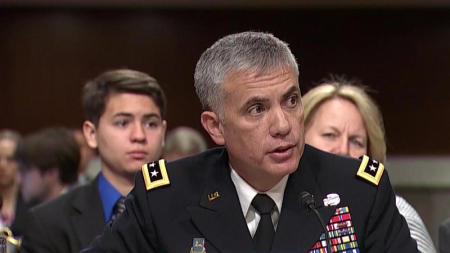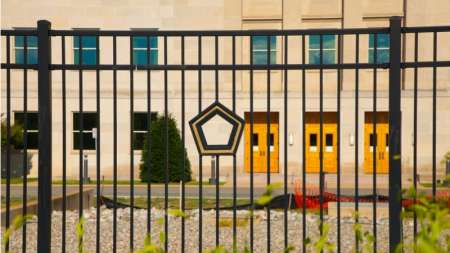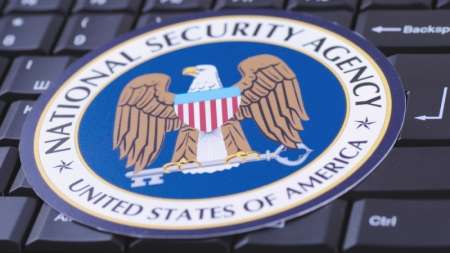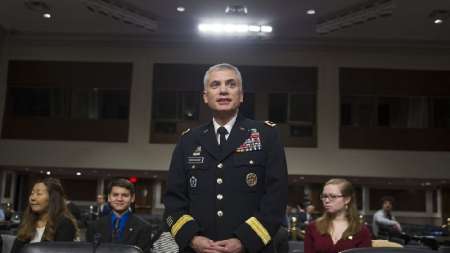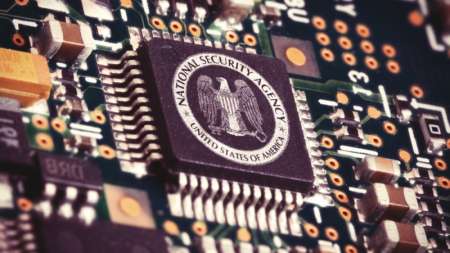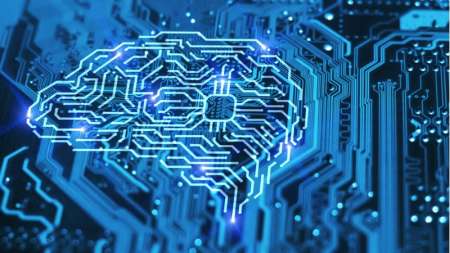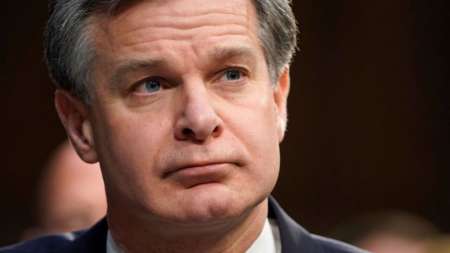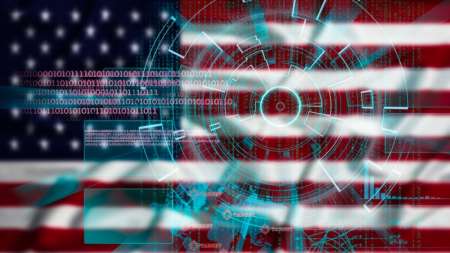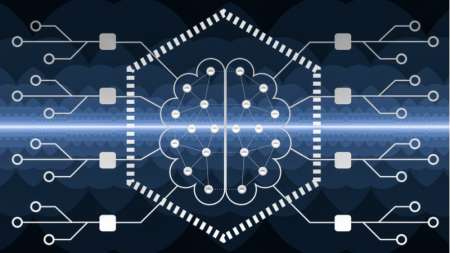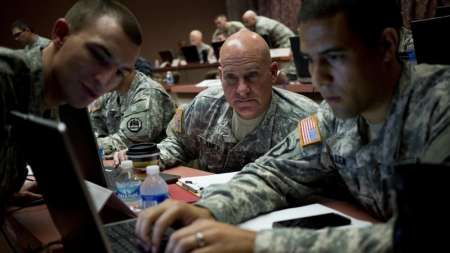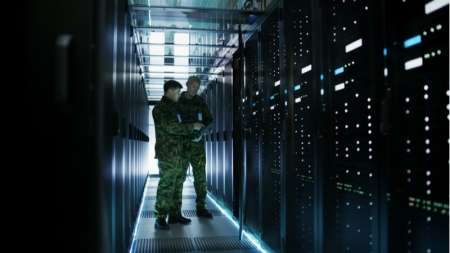Amid discussions of data governance at an IBM Think Gov panel yesterday, Department of Homeland Security Data Manager Col. John Scott explained an interagency predictive analytics program in development between the Departments of Defense (DoD) and Veteran Affairs (VA). […]
Two members of the House Armed Services Committee said at a hearing on Wednesday they support continuation of the “dual-hat” command structure which finds Gen. Paul Nakasone heading both U.S. Cyber Command and the National Security Agency. […]
The Director of National Intelligence has announced the appointment of Erin Joe as director of the Cyber Threat Intelligence Integration Center (CTIIC), which as its name suggests integrates cyber threat data from government and other sources, facilitates threat-data sharing and supports government interagency planning of responses to adversaries. […]
Artificial intelligence (AI), following on the heels of its older sibling RPA (robotic process automation), is no longer waiting to be born, but remains more of a toddler on the Federal IT scene–still learning to walk before trying to run, but bulking up from an appetite for serious Federal government tech interest and investment. […]
In what it calls a “strategic decision” that will allow its personnel to concentrate on cyber operations and its warfighting mission, the Air Force is trying to get out of the business of providing end-user services, such as device management, help desks, and the underlying network infrastructure. Instead, it is contracting those jobs out to industry as part of a network-as-a-service (NaaS) experiment. […]
The Defense Department’s FY 2020 budget proposal which was included as part of President Trump’s budget proposal rolled out yesterday, calls for a total of $9.6 billion of cyber spending, up more than $1 billion from the $8.5 billion DoD cyber spending total cited by the White House in FY2019 budget documents. […]
An internal U.S. Navy report found that the service branch and its industry partners face a severe barrage of cyberattacks from China, according to an article from the Wall Street Journal today. […]
The National Security Agency (NSA) and the Trusted Computing Group (TCG) industry consortium have come up with validation software that can be used with any device and could go a long way to securing the supply chain for computing devices. […]
Government-wide security clearance processes, and the half million-plus backlog in the clearance applications pipeline, made the Government Accountability Office’s (GAO) High-Risk report last week as a contributing factor to the larger problem of ensuring IT security, generally. […]
Software-maker trade group BSA sent a letter to leaders of the House and Senate Armed Services Committees on Thursday urging modernization of the Department of Defense’s (DoD) supply chain security and software acquisition approach in the FY 2020 National Defense Authorization Act. […]
The Defense Information Service Agency (DISA) is transferring control of the National Background Investigation Service (NBIS) to the Director of Defense Security Service (DSS). […]
Sens. Ron Wyden, D-Ore, Martin Heinrich, D-N.M., and Kamala Harris, D-Calif., wrote Dan Coats, director of National Intelligence, on Monday urging him to declassify information regarding China’s attempts to influence U.S. elections. […]
The military services reached a new technological milestone when the Air Force Research Laboratory (AFRL) introduced its first-ever supercomputing site for classified research at the AFRL Department of Defense (DoD) Supercomputing Resource Center. […]
Gen. Paul Nakasone, head of U.S. Cyber Command and the National Security Agency (NSA), discussed how the recent shift in Federal cybersecurity strategies enabled a stronger response to foreign adversaries. […]
National Security Agency (NSA) Senior Adviser Rob Joyce said yesterday that any move to regulate social media platforms would have to start with quicker and more efficient connections between policy makers and policy enforcers such as the Department of Homeland Security (DHS) and the Federal Bureau of Investigation, but also warned that any effective regulation of social media platforms would be difficult to achieve in the U.S. […]
The Department of Defense’s many artificial intelligence programs–currently over 600 and counting–generally share one stated goal: the blend of humans and machines working as a team, in which AI systems become “partners in problem-solving,” as opposed to our new overlords. Whether in jobs such as cybersecurity, analyzing reams of data, images, and video, operating swarms of drones, or disaster assistance, the idea is to have AI and machine learning systems that augment and improve what personnel can do. […]
FBI Director Christopher Wray underscored that the private sector plays a pivotal role in helping the FBI counter cyberthreats at during a talk at the RSA Conference today, adding that the bureau has worked to build relationships with private companies to do so. […]
In a letter dated Feb. 27, Sens. Mark Warner, D-Va., and Marco Rubio, R-Fla., requested Dan Coats, director of National Intelligence, produce “an unclassified report on the participation of China and other adversarial nations in the international standard setting bodies (ISSBs) for fifth-generation wireless telecommunications technologies (5G).” […]
The United States Transportation Command (USTRANSCOM) is working to improve cybersecurity infrastructures to prevent breaches of industry partners, like those of USTRANSCOM contractors that began June 1, 2012 and resulted in 20 successful intrusions over a period of 12 months by Chinese hackers. […]
The Air Force Business Plan, released by the service on Monday, places a strong emphasis on enhancing the Air Force’s IT and cybersecurity capabilities. […]
Officials from the intelligence community on Thursday discussed the importance of using artificial intelligence to process and analyze the large amount of collected data by agencies, thus freeing analysts to shift their efforts toward looking into anomalies identified by AI. […]
The Government Accountability Office said in Feb. 25 report that the Defense Department needs to get a better handle on its very considerable weapons systems software sustainment costs, which it estimated may run at least $15 billion over the next five years. […]
John Sherman, CIO of the intelligence community (IC), offered his view today into the principles guiding his office in its efforts to create an enterprise environment for the IC and stay on the cutting edge of technology. […]
If you’re just regular people, the answer is probably not. […]
Senior Defense Department officials told House members on Tuesday they are taking additional steps to boost cybersecurity workforce ranks at the Pentagon through means including the Cyber Excepted Service (CES) personnel system authorized in 2016 that allows DoD to expedite and simplify recruiting and hiring for civilian cyber professionals. […]
As the first chief data officer of the Department of Defense (DoD), Michael Conlin described the challenges of approaching a vast mountain of data from numerous systems at the Pentagon, and making it actionable information for the department. […]
The Cybersecurity and Infrastructure Security Agency (CISA) is seeking feedback on proposed updates to the National Emergency Communications Plan (NECP) after being informed from 2018 baseline assessment results. […]
The Defense Information Systems Agency (DISA) is working to address partner agency concerns about the effectiveness of its Joint Regional Security Stacks (JRSS) program, according to a blog post released by the agency on Thursday. […]
Defense Department (DoD) officials voiced sometimes conflicting ideas today about how the agency should migrate legacy systems to the cloud. […]
The Department of Defense’s Artificial Intelligence Strategy puts the DoD on more of a fast track toward developing and employing AI and machine learning to support, as the strategy’s preface states, “a force fit for our time.” The strategy outlines an accelerated, collaborative approach with industry, academia, and allies toward new technologies that will “transform […]


